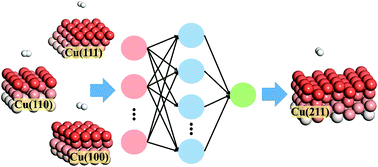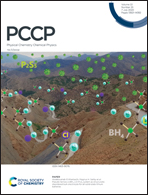Unified and transferable description of dynamics of H2 dissociative adsorption on multiple copper surfaces via machine learning†
Abstract
Dynamics of gas-surface reactions is of fundamental importance to various interfacial problems. Accurate modeling of gas-surface reaction dynamics requires a globally accurate reactive potential energy surface (PES), typically specialized for one molecule–surface system with no transferability even from one to another surface. As a proof of concept, we report a novel machine learned PES for H2 reactive scattering from multiple low-index copper surfaces. Trained with limited data, this PES enables a uniformly and chemically accurate description of dissociative adsorption of H2/D2 on Cu(111)/Cu(100)/Cu(110) and offers quantitative insights to the remarkable surface temperature effect. More impressively, this PES is also transferable to describe the dynamics of H2 dissociation on Cu(211) without learning any data on that stepped surface, which can be further improved when adding only a small amount of points. Our work opens a new avenue for studying the dynamics of the structure or step density-sensitive gas-surface reactions relevant to heterogeneous catalysis.

- This article is part of the themed collections: Emerging AI Approaches in Physical Chemistry and 2020 PCCP HOT Articles


 Please wait while we load your content...
Please wait while we load your content...